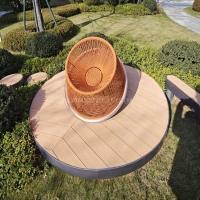Welcome to the website for landscape facilities products and knowledge.
What are the scleroscope hardness properties of the bin’s materials?
The scleroscope hardness of bin materials is a critical factor in determining their durability and resistance to wear in industrial environments. Scleroscope hardness testing measures the rebound of a diamond-tipped hammer dropped onto the material’s surface, providing a value that indicates the material's ability to withstand impact and abrasion.
Common bin materials, such as stainless steel, carbon steel, and high-density polyethylene (HDPE), exhibit varying scleroscope hardness levels. Stainless steel typically scores higher due to its dense crystalline structure, making it ideal for heavy-duty applications. Carbon steel offers moderate hardness, balancing strength and cost-effectiveness, while HDPE, though softer, excels in corrosion resistance.
Understanding these hardness properties helps industries select the right bin material for specific needs, ensuring longevity and performance. Regular hardness testing can also monitor material degradation over time, preventing unexpected failures. By prioritizing scleroscope hardness, businesses optimize their operations and reduce maintenance costs.
Related search:

Recommendation
Swivel chair-Specialty steel structure woven rattan leisure chair with rotatable design